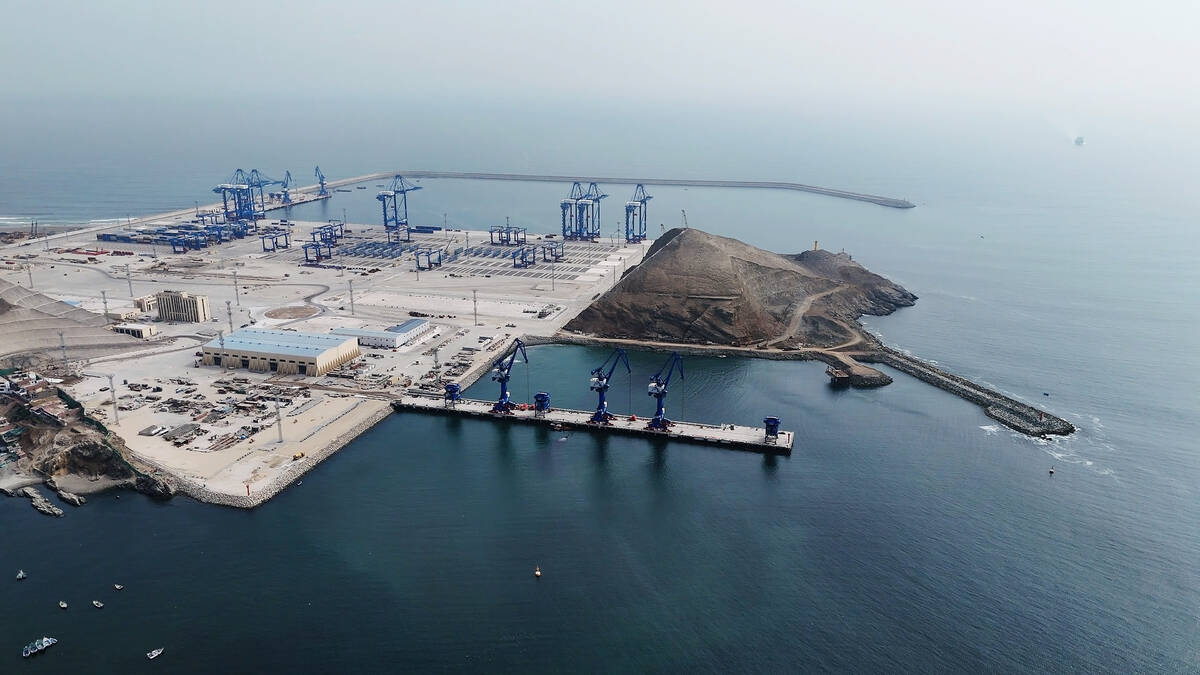GREELEY, Colo. – On the surface, little appears to have changed in beef processing plants in the last 100 years.
Workers still stand at assembly lines wearing blood-stained aprons, wielding razor sharp knives and meat hooks.
But large plants in Canada and the United States have actually evolved into highly technical operations striving for improved standards of sanitation and efficiency.
At the JBS beef plant in Greeley, Colorado, signs throughout the plant in English and Spanish remind workers to maintain high levels of cleanliness while keeping their work spaces safe.
Read Also

Geopolitics can change trade routes
WHISTLER, B.C. — Today’s geopolitical tensions could have dire long-term consequences, says the director of international policy at the University…
The plant has been remodeled many times since it was built in 1960. More innovations were added after JBS bought it in 2006.
JBS was formed in Brazil in 1953 when José Batista Sobrinho started slaughtering cattle to feed workers building the new capital city of Brasilia.
The family owned company has grown into the world’s largest beef processor with plants in Australia, the U.S., Argentina, Brazil and Italy.
When it bought Smithfield Packers, it acquired four fat cattle plants, three pork operations and eight feedlots with a one-time capacity of 850,000 head.
The company’s primary focus is on beef production, but it does own a lamb division that operates in the U.S. and Australia.
Its total daily slaughter capacity is 65,000 cattle per day, giving it 32 percent of U.S. packer market share and 10 percent of the world beef market.
The Greeley plant was originally owned by Warren Montfort, who started feeding cattle in the area in 1930. Montfort became the first to operate a 100,000 head capacity feedlot in the U.S.
The nearby packing plant was built to reduce freight, but community concerns over feedlot odour prompted its relocation in 1976.
The plant can kill 6,000 head a day, but Mark Gustafson, vice-president of international sales for JBS’s U.S. division, said it currently processes about 5,500 head in two shifts. It also runs a sanitation shift at night.
The plant operates five days a week under normal market conditions but recently scaled back to four days. If demand increases, it can step up production to six days a week.
“They have put billions of dollars into the U.S. industry so they are very committed to this business,” Gustafson said about JBS during a tour Jan. 11. “They do not want to close things. They want the industry to flourish.”
As the cattle business changes, so does the plant.
Cattle today are heavier, which means so are the final beef products. This causes problems because the cuts are too big to fit properly in a box.
Quality grades and red meat yields are also less predictable.
About 50 percent of the animals are fitting into the Choice or Prime grades with higher amounts of marbling, while the rest fall into the Select grade. The plant would prefer to see 70 percent fall into the higher quality grades.
The plant is involved in a number of quality programs including exporting beef to Japan. At certain times of the year it is willing to pay a $60 premium for age and source verified cattle but they are hard to come by.
Gustafson speculates many feedlots do not want the extra work to identify verified animals. They may not be ready to market for another 150 days and feeders do not want to take the risk of paying primary producers more for something that may receive no bonus.
“We keep sending the signal back to the guys on what we are paying, but for some reason that is not getting back to the seed stock guys,” Gustafson said, referring to the typical cow-calf operation.
“It is all risk, risk, risk and it all ends up being nothing.”
JBS contracts age and source verified cattle to meet its marketing needs. It handles natural and other value-added programs such as Certified Angus Beef but does not accept Canadian cattle at the Greeley plant. Instead, those cattle go to the company’s Utah operation.
Following the introduction of country-of-origin labelling (COOL) last year, packing companies decided to designate certain plants for foreign animals for economic reasons.
To fit certain programs or to meet COOL requirements, cattle must be sorted and the production lines are stopped to change over to the next category.
Gustafson said it costs $382 per minute to stop the chain because workers do nothing while the switch is made.
In addition to sorting cattle, it takes time to implement the JBS food safety program.
The first step is hide washing to reduce bacteria caught on the coat in manure and dirt.
The next step is steam vacuuming to reduce E. coli 0157:H7 on beef surfaces by targeting areas touched by knives and machines during the skinning process.
A pre-wash before evisceration uses water and organic acid to further reduce E. coli, listeria and salmonella.
After carcasses are gutted and split, the hanging sides pass through a pasteurization chamber where water heated to more than 75 C is applied for more than five seconds to further clean the product. Afterward, cold water is applied to reduce temperature for optimum colour and quality.
The next step is a thermal organic rinse followed by a cold carcass sanitizer before the carcass is broken into subprimals and trimming. This creates a barrier to prevent microbial growth during processing.















